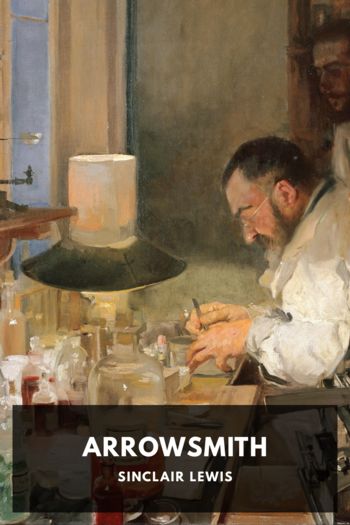Holocaust: The Nazi Persecution and Murder of the Jews, Peter Longerich [essential books to read TXT] 📗

- Author: Peter Longerich
Book online «Holocaust: The Nazi Persecution and Murder of the Jews, Peter Longerich [essential books to read TXT] 📗». Author Peter Longerich
have caused the NS leadership to present themselves as relatively moderate,
sanctioning the use of force only for the complete suppression of ‘Marxism’.
These were the formal opening of the Reichstag due to take place on 21 March,
where the National Socialists wished to portray themselves as partners of the
Conservatives on the basis of Prussian traditionalism, and the passing of the
Enabling Act slated for two days later, for which the government required
the support of the non-socialist parties.
Nonetheless, it was not possible to put a complete end to anti-Jewish violence in
this phase. Members of the SA perpetrated what amounted to a pogrom in
Creglingen (in the southern German state of Württemberg) on 25 March. They
forced their way into the town’s synagogue, dragged the male worshippers into the
town hall where they humiliated and maltreated them, sometimes very seriously
indeed. Two Jewish inhabitants died as a result of their injuries. 9
During the month of March, alongside the attacks on Jewish shops and
businesses, there were many towns in which Jewish lawyers were forcibly
removed from the administration of justice. From 9 March on, SA and SS
troops occupied court buildings and ejected Jewish members of the legal
profession, including judges and public prosecutors. 10 The most famous incident was in Breslau, where the violence forced the regional court to declare a
three-day halt to judicial proceedings. 11 Such attacks on court buildings were hugely inflamed by various public declarations and continued throughout the
second half of March. 12 Interventions into the area of justice by ordinary members of the Party gave the judicial authorities the excuse to use administrative means to remove Jewish lawyers from their positions, 13 and created the basis on which the subsequent legal exclusion of Jews from the judiciary and the
public sector as a whole could quickly be established. For the National Social-
ists, however, these illegal interventions and their rapid subsequent legalization
were also an important step on the way towards control of the entire state
apparatus, a first litmus test to establish how resistant or compliant the pre-
dominantly conservative civil service actually was, and an opportunity for
assessing at the same time the extent to which German nationalist coalition
partners would be prepared to tolerate interference in the rule of law at this
early stage.
Displacement from Public Life, 1933–4
35
If the Nazi leadership resolved at the end of March to call once more for a
boycott of Jewish shops and businesses—centrally coordinated this time—then it
did so for a mixture of tactical and fundamentally ideological reasons. 14 The decision to call for a boycott arose from the specific dynamics of the process
towards the seizure of power. When the Enabling Act was passed at the end of
March the NSDAP had completed an important stage in their plans to ensure a
monopoly of power. The next decisive step on the path to total power, the
definitive suppression of unions and the SPD and the dissolution of the non-
socialist parties, was to take place only after 1 May, the National Labour Day,
which they proposed to make into an official public holiday celebrated with great
pomp and circumstance. At the end of March, therefore, the NS Party leadership
was in a delicate transitional phase in the process towards the seizure of power:
grass-roots Party activism could not be allowed to wane, but the activists them-
selves had to be restrained from being overly brutal towards their political enemies
within the unions and the SPD and towards the competition represented by the
non-socialist parties. It was moreover important to regain control of the increas-
ingly forceful anti-capitalist drive arising from the Party activists, which was
leading to disruptive ‘interventions in the economic life of the country’ at precisely
this point, the second half of March. 15
Both aims were attainable by means of a controlled resumption of the anti-
Jewish boycott. The Party leadership was demonstrating that it was responding to
the anti-Semitic demands of the population, and by steering and controlling the
whole campaign from the centre, was able to re-establish its authority over the
Party membership. The fact that the leadership succeeded in gaining control over
the attacks emanating from the activists in certain districts by the middle of
March, and that it was to initiate a major propaganda campaign to stoke the
flames of the population’s anger by the end of March, shows that the leadership
was fully in control of the situation and was in no sense propelled into the boycott
by the grass-roots membership.
The need to steer this complex internal Party dynamic during the process of the
seizure of power was only one of two main motives. By starting a campaign
against the German Jews, or in other words by seizing hostages, the NS leadership
hoped to be able to stem the rising tide of criticism from abroad. By labelling
criticism of this type ‘Jewish atrocity stories’, which emanated from a relatively
small section of foreign Jews, they defined international reaction against the
brutalities of the ‘seizure of power’ in anti-Semitic terms, and at the same time
created the pretext for the planned boycott.
Such tactical considerations should not obscure the fact that, only a few months
after taking over the reins of government the NSDAP was using the call for a
boycott to begin implementing a significant element in its political programme,
namely the disenfranchisement of the Jewish minority. This makes it clear that
Nazi Judenpolitik cannot be understood in merely functional terms, as an instrument
36
Racial Persecution, 1933–1939
designed to mobilize the NS movement; it was one of the central pillars of the
NSDAP’s ideology, and there was no difference of opinion on this point between
the Party leadership and the ordinary Party members.
The campaigns against Jewish businesses undertaken under centralized dir-
ection, and pre-empted by the violence of March 1933, were now linked with the
continuing attacks on Jewish lawyers to form a comprehensive anti-Jewish
crusade underpinned by the authority of the regime. In this way the pressure
needed to initiate anti-Semitic legislation—the ‘atmospheric’ conditions for it—
could be created. Under this pressure, the Jews could be removed from public
life, and from state institutions in particular, and an appropriate platform could
be created for the complete segregation of the Jewish minority that was to follow
at a later date.
The successful enforcement of these first anti-Jewish measures allowed the
NSDAP to make the ‘Jewish question’ a dominant factor in domestic





Comments (0)